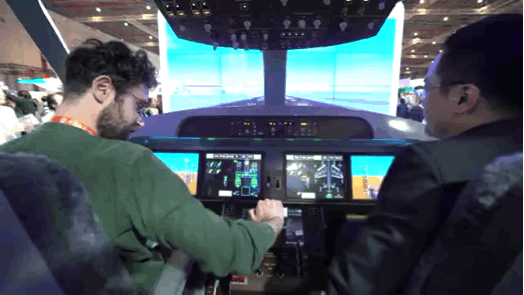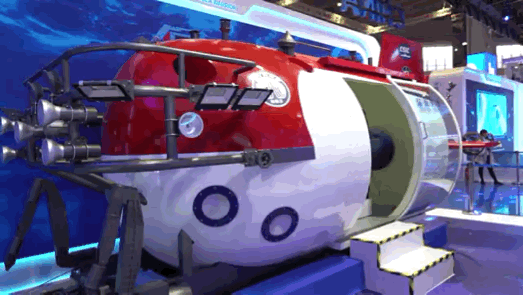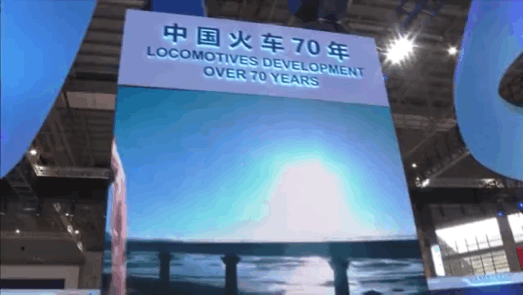Matchmaking events, product releases and the opportunity to reach a market of 1.3 billion consumers – everyone at the China International Import Expo (CIIE) is ready to do business. But you don't have to be a C-suite executive or a business owner to be part of the action.
The CIIE is bringing the world to visitors of the Country Pavilion, where 64 nations are showcasing their heritage, history and hidden gems.
From Fiji to Finland and Tanzania to Thailand, travelers can cross the seven seas without leaving Shanghai. Passports are not needed, but a pair of sensible shoes might be a good choice given that the exhibition hall is 30,000 square meters – four times the size of a football pitch.

China is putting on a grand show at its own booth. Some exhibits are taking visitors back in time and others are transporting them to otherworldly places.
The People's Republic of China turned 70 this year, and the China pavilion is a celebration of watershed moments and major milestones since 1949. But history doesn't have to be boring and thanks to interactive, immersive and innovative technologies, the China Pavilion is turning heads and attracting foot traffic.

Sky's the limit
Put your driving skills to the test as you take a plane off the ground. The Commercial Aircraft Corp of China (COMAC), the manufacturer of the C919, China's first passenger jetliner, has brought a flight simulator to the pavilion and aerophiles are over the moon. Pilot hopefuls have to operate the thrust levers on their right-hand side, move around a joystick on their left and check the craft's vital signs to ensure the machine is in a state of balance. The plane will soar over Beijing's recently-opened Daxing Airport, the Great Wall and the National Exhibition and Convention Center, where the CIIE is being held, before landing at Shanghai Hongqiao International Airport.

Bottomless dives
Those who prefer ocean floors over cruising altitudes can hop on the manned submersible Shenhai Yongshi, or Deep-Sea Warrior. The vessel can descend to 4,500 meters below the water's surface and has already revealed a vibrant marine life and plastic trash at a depth of 2,000 meters. It took eight years and more than 90 domestic organizations and companies to develop the submersible, which is 95 percent made in China. A VR headset and controllers will bring you all the way to the seabed in a journey that will take your breath away.

Fast, faster, fastest
China has more high-speed rail tracks than the rest of the world combined, and its network is on course to surpass 30,000 kilometers this year. But before bullet trains were whizzing between mega cities at 350 km/h, they were moving unhurriedly at a slow, chugging pace. Mockups of the country's indigenous Fuxing, or rejuvenation, high-speed trains at the pavilion show just how far China has gone in its automotive engineering capabilities since its "green-skinned trains," whose name was inspired by the color of the coaches' paint. Fans of adrenaline-filled rides can try their hand at (virtually) revving the engines of a bullet train and getting it to glide on tracks.

E.T. is that you?
Outer space might be a quiet place, but earthlings know how to make some noise. Over the years, groovy jams made their way beyond the earth's atmosphere. Tunes of Jingle Bells, Chinese patriotic song The East is Red and David Bowie's Space Oddity will forever echo in the far corners of the universe. Now China is all ears to hear what aliens are saying, thanks to FAST, or Five-hundred-meter Aperture Spherical Radio Telescope. It's the world's largest single-dish radio telescope and its job is to detect sounds from space. It's so far picked up mysterious signals and noise from dying stars. VR technology at the pavilion allows a close look at the mega facility tucked in a bowl-shaped valley between the lush mountains of Guizhou Province in China's southwest.

Countdown to prosperity
China has taken it upon itself to eradicate extreme poverty on its territory by 2020, pledging to not leave anyone behind in its pursuit of prosperity. With this year about to end, the country is racing against time to help its 16.6 million population still living in need lift itself above the national poverty line of 2,300 yuan (329 U.S. dollars) per year. The pavilion features a countdown clock, showing to the second how much time is left before the due date – a reminder of the urgency of China's poverty alleviation drive. For those wondering, as of November 8, it's T-minus 419 days.
(CGTN's Zhu Danni contributed to this article)